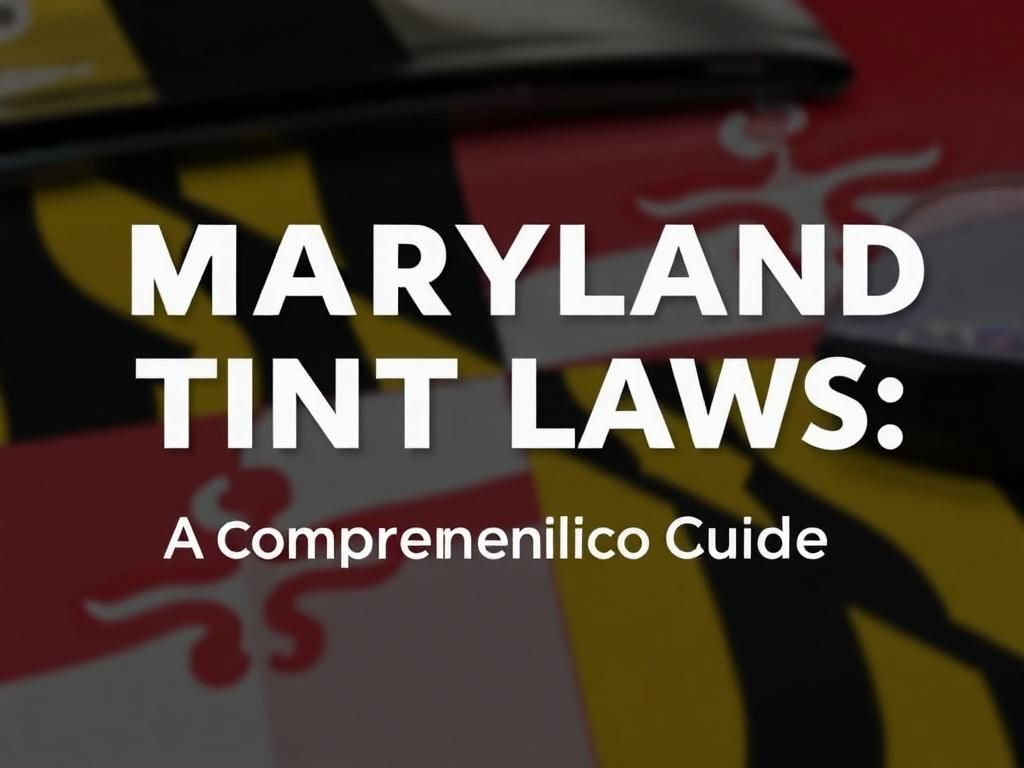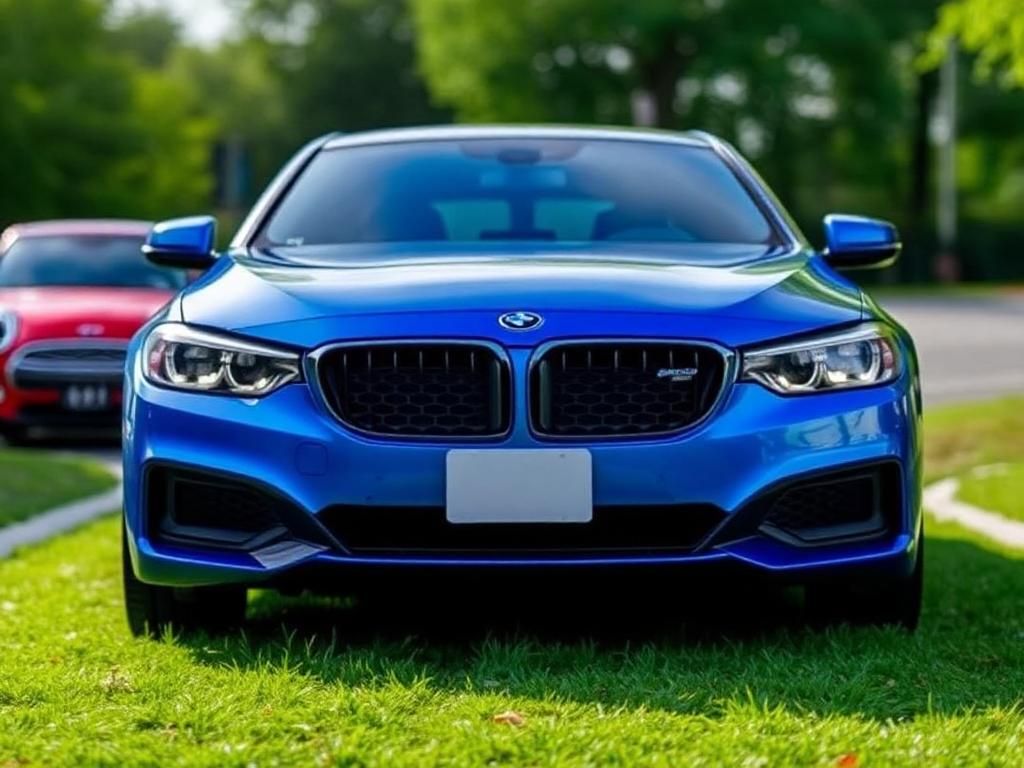Window tinting has become a popular choice for vehicle owners, not just for enhancing the aesthetic appeal of their cars but also for the myriad of benefits it offers. Window tinting refers to the application of a thin, tinted film to the windows of a vehicle, reducing heat, blocking harmful UV rays, and providing enhanced privacy. Given its growing popularity, understanding the Maryland tint laws is essential for drivers who wish to enjoy the functionality and advantages of tinted windows while remaining compliant with state regulations.
The importance of understanding tint laws cannot be overstated. Not only do these regulations have legal implications, but they also ensure safety on the roads. Furthermore, adhering to these laws can significantly enrich the vehicle’s overall value and appearance. In Maryland, tinting laws are designed to balance personal preference with safety, creating an environment where aesthetics meet legality.
The Legal Framework of Maryland Tint Laws
State Regulations vs. Local Ordinances
In Maryland, window tinting regulations are defined by both state laws and local ordinances. The Maryland State Police play a crucial role in enforcing these laws, ensuring that all vehicles comply with the established guidelines. Violation of these laws can lead to legal repercussions, including fines and penalties. It’s important for vehicle owners to familiarize themselves with state-specific tint rules, as local laws may vary slightly.
Types of Window Tint
When choosing to tint a vehicle’s windows, various types of films are available. These include:
– **Dyed Films**: Provide a basic level of privacy and heat reduction.
– **Metalized Films**: Offer better heat rejection and enhance window strength.
– **Ceramic Films**: Provide superior heat rejection, UV protection, and privacy without interfering with electronics.
Whether for aesthetics, heat protection, or UV safeguarding, each type serves a particular need, helping owners make informed choices.
Window Tint Restrictions in Maryland
Front Windshield
VLT (Visible Light Transmission) Requirements
In Maryland, the front windshield has specific tint restrictions. The maximum tint darkness allowed is typically a tint film with VLT of 35%. However, a medical exemption may permit darker tints for those with valid medical conditions.
Strip Restrictions
Additionally, there are restrictions on the tinted visor strip for the windshield. This strip can only be a mere 5 inches wide or as specified by local laws.
Front Side Windows
VLT Requirements
Front side windows in Maryland also have strict regulations. The maximum allowable tint darkness is 35% VLT, ensuring that at least 35% of natural light is permitted through the glass. Additionally, reflective films are limited to 20% reflectivity.

Rear Side Windows and Back Window
VLT Requirements
For rear side windows and the back window, Maryland law allows for a more lenient VLT of any darkness for passenger vehicles. Multi-purpose vehicles, however, may have altered regulations, so it’s advisable to confirm with local laws.
Reflectivity Limits
Understanding the difference in reflectivity is equally important. For instance, passenger cars can have more reflective films compared to SUVs and trucks, emphasizing the need for drivers to know the specifics about their vehicle type.
Special Considerations
Medical Exemptions
Maryland tint laws allow for medical exemptions under specific circumstances. To obtain this exemption, individuals must have documentation from a licensed physician that outlines the medical necessity for darker window films.
Commercial Vehicles
Different regulations also govern tinting for commercial vehicles. Maryland tint laws stipulate that commercial fleet vehicles may have unique requirements that differ from standard passenger vehicles, especially when it pertains to visibility and reflectivity standards.
Consequences of Non-Compliance
Legal Penalties
Failure to comply with Maryland tint laws can result in significant legal penalties. This includes hefty fines, potential vehicle impoundment, and points added to the driver’s record.
Safety Risks
Non-compliant window tinting doesn’t just come with legal ramifications; it poses serious safety risks as well. Reduced visibility due to excessive tinting can lead to impaired driving, which increases the likelihood of accidents on Maryland’s busy roads.
Tint Installation Compliance
Choosing a Certified Installer

To stay compliant with Maryland laws, it’s crucial to choose a certified installer who is well-versed in local tint regulations. This ensures that the installation process meets legal standards and provides the benefits you desire.
DIY Tinting
While DIY tinting may appear cost-effective, it carries considerable risks. Improper installation can lead to non-compliance with state regulations, potentially resulting in fines or additional legal issues. For the best results, adhering to Maryland tint laws through professional installation is highly advised.
How to Check Your Tint Compliance
Measuring Tint Darkness
If you are uncertain about the legality of your window tint, you can manually measure the VLT using specialized tools. Various devices available in automotive shops can guide you in assessing your tint darkness accurately. Alternatively, you can have your tint professionally tested at local automotive centers.
Resources for Tint Laws
For the most current updates on Maryland tint laws, refer to the official state website of the Maryland Department of Transportation or consult with local authorities for specific inquiries about tint regulations.
Conclusion
Adhering to window tint laws in Maryland carries significant benefits. Not only does compliance provide peace of mind and safeguard drivers against legal issues, but it also allows for the exploration of tint options that enhance both protection and aesthetics.
Additional Resources
FAQs
1. What is the maximum tint darkness allowed for front windshields in Maryland?
– The maximum allowed tint darkness for front windshields is 35% VLT.
2. Can I use reflective window films on all my windows?
– Reflective films are only allowed under specific restrictions depending on the window type, particularly for front side windows.
3. How can I obtain a medical exemption for window tinting?
– A medical exemption requires documentation from a doctor outlining the medical necessity for darker window films.
4. Are there different tint rules for commercial vehicles?
– Yes, commercial vehicles often have distinctive regulations that differ from passenger vehicles.
5. What are the consequences of having illegal tint on my vehicle?
– Consequences may include fines, points on your driving record, and vehicle impoundment.
6. How can I measure the VLT of my window tint?
– Use specialized measuring tools or consult a professional for accurate testing.
Helpful Links
– [Maryland Department of Transportation](https://mva.maryland.gov/)
– [Window Tint Law Overview](https://www.tintinglaws.com/maryland)
| Window Type | Maximum Tint Darkness | Strip Restrictions | Reflectivity (if applicable) |
|---|---|---|---|
| Front Windshield | 35% VLT | 5 inches | N/A |
| Front Side Windows | 35% VLT | N/A | 20% reflectivity |
| Rear Side Windows | No limit | N/A | N/A |
| Back Window | No limit | N/A | N/A |